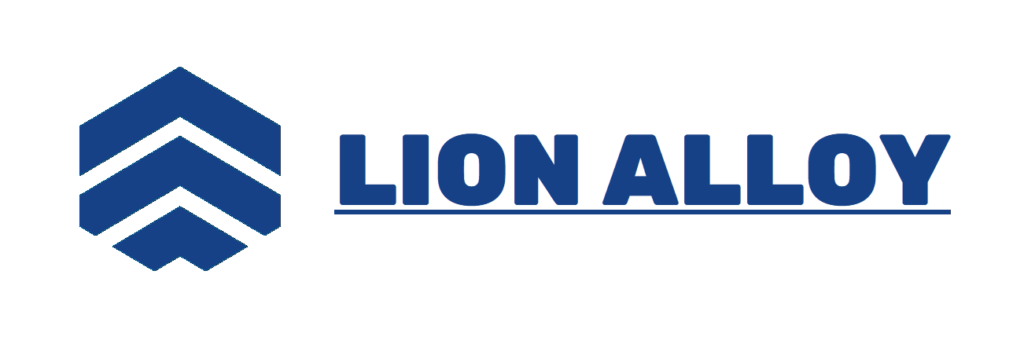소개
NIMONIC 80A는 고온 응용 분야용으로 특별히 설계된 니켈 기반 초합금으로 탁월한 기계적 특성과 산화 및 부식에 대한 저항성을 제공합니다. NIMONIC 80A 부품의 가공은 합금의 특성과 적절한 가공 기술에 대한 포괄적인 이해가 필요한 중요한 프로세스입니다. 이 기사에서는 NIMONIC 80A와 관련된 다양한 가공 기술, 도구 및 매개변수를 살펴보고 가공 중에 직면하는 과제와 공정 최적화를 위한 솔루션을 살펴봅니다.
1. NIMONIC 80A의 가공관련 특성
가공 기술에 대해 알아보기 전에 가공성에 영향을 미치는 NIMONIC 80A의 고유한 특성을 이해하는 것이 중요합니다.
1.1 기계적 성질
NIMONIC 80A는 특히 높은 온도에서 높은 강도, 연성 및 인성을 조합하여 나타냅니다. 이는 까다로운 응용 분야에 이상적인 후보이지만 가공 경화로 인해 가공 중에 어려움을 겪기도 합니다.
표 1: NIMONIC 80A의 기계적 특성
| 재산 | 값 |
|---|---|
| 항복강도(MPa) | 600 |
| 극한 인장 강도(MPa) | 860 |
| 신장률(%) | 30 |
| 경도(HB) | 200 |
| 탄성 계수(GPa) | 200 |
1.2 열적 특성
NIMONIC 80A는 높은 온도에서도 기계적 무결성을 유지하는데, 이는 절삭 공구 성능을 고려할 때 매우 중요합니다.
표 2: NIMONIC 80A의 열적 특성
| 재산 | 값 |
|---|---|
| 녹는 점 (° C) | 1300 |
| 열전도율(W/m·K) | 11.5 |
| 열팽창 계수(°C) | 13.3 x 10⁻⁶ |
2. NIMONIC 80A의 가공기술
2.1 터닝
선삭은 NIMONIC 80A에서 원통형 부품을 생산하기 위한 일반적인 가공 공정입니다. 절삭 공구와 매개변수의 선택은 가공 공정의 품질과 효율성에 큰 영향을 미칩니다.
2.1.1 도구 선택
초경 공구는 일반적으로 경도와 내마모성으로 인해 NIMONIC 80A 선삭에 권장됩니다. 코팅된 초경 공구는 마찰을 줄이고 공구 수명을 늘려 성능을 더욱 향상시킬 수 있습니다.
표 3: NIMONIC 80A 선삭에 권장되는 도구 유형
| 도구 유형 | 코팅 유형 | 이익 |
|---|---|---|
| 초경 공구 | TiN(질화티타늄) | 내마모성 증가 |
| 세라믹 도구 | Al2O3(알루미나) | 높은 절단 속도 |
| CBN(입방정질화붕소) | – | 고온에서 탁월한 내마모성 |
2.1.2 매개변수 및 기법
NIMONIC 80A를 전환하기 위한 최적의 매개변수는 다음과 같습니다.
표 4: 터닝 매개변수
| 매개변수 | 권장값 |
|---|---|
| 절삭속도(m/min) | 30-50 |
| 이송속도(mm/rev) | 0.1-0.3 |
| 절입량(mm) | 1-5 |
칩 제거를 강화하고 발열을 줄이려면 높은 절삭유 유량을 사용하십시오.
2.2 밀링
NIMONIC 80A 밀링에는 공구 선택 및 가공 매개변수를 신중하게 제어해야 합니다. 이 공정에서는 합금의 강도와 경도로 인해 상당한 열이 발생할 수 있습니다.
2.2.1 도구 선택
선삭과 마찬가지로 밀링 작업에는 초경 공구가 선호됩니다. 또한 포지티브 경사각이 있는 엔드밀을 사용하면 칩 흐름이 더 좋아질 수 있습니다.
표 5: NIMONIC 80A 밀링에 권장되는 도구 유형
| 도구 유형 | 특징 | 이익 |
|---|---|---|
| 솔리드 초경 엔드밀 | 4날 디자인 | 향상된 칩 제거 |
| 코팅 초경 밀 | TiAlN(티타늄 알루미늄 질화물) | 향상된 공구 수명 |
| 페이스밀 | 교체 가능한 인서트 | 절단 형상의 유연성 |
2.2.2 매개변수 및 기법
표 6: 밀링 매개변수
| 매개변수 | 권장값 |
|---|---|
| 절삭속도(m/min) | 20-40 |
| 이송속도(mm/tooth) | 0.05-0.2 |
| 절입량(mm) | 1.5-4 |
직경이 더 큰 커터를 사용하면 절삭력을 줄이고 표면 조도를 향상시킬 수 있습니다. 충분한 절삭유 공급을 통해 온도를 제어하고 공구 수명을 연장하십시오.
2.3 드릴링
NIMONIC 80A의 드릴링 작업에는 과도한 공구 마모 없이 효율적인 구멍 생성을 보장하기 위해 공구 선택 및 매개변수를 신중하게 고려해야 합니다.
2.3.1 도구 선택
NIMONIC 80A를 드릴링하려면 끝이 날카로운 고속강(HSS) 또는 초경 드릴을 사용하는 것이 좋습니다.
표 7: 권장 드릴 유형
| 드릴 종류 | 특징 | 이익 |
|---|---|---|
| 초경 드릴 | TiN 코팅 | 내마모성 |
| HSS 드릴 | 가변 포인트 각도 | 다양하고 비용 효율적 |
2.3.2 매개변수 및 기법
표 8: 드릴링 매개변수
| 매개변수 | 권장값 |
|---|---|
| 절삭속도(m/min) | 10-25 |
| 이송속도(mm/rev) | 0.05-0.1 |
| 드릴 직경(mm) | 최대 20개 |
과열을 방지하고 칩 제거를 돕기 위해 절삭유를 활용하십시오. 펙 드릴링은 열 축적을 최소화하므로 깊은 구멍을 드릴링할 때 도움이 될 수 있습니다.
3. NIMONIC 80A 가공의 과제
유리한 특성에도 불구하고 NIMONIC 80A를 가공하는 데는 몇 가지 과제가 있습니다.
3.1 가공경화
한 가지 중요한 과제는 NIMONIC 80A의 작업 경화 경향입니다. 이는 가공 중 변형으로 인해 소재의 코팅과 구조가 경화될 때 발생합니다.
표 9: 가공 강화의 효과
| 효과 | 설명 |
|---|---|
| 공구 마모 증가 | 공구 수명 단축 |
| 표면 마감 불량 | 추가 마무리 작업이 필요합니다. |
| 더 높은 절삭력 | 기계 부하 증가 |
3.2 발열
NIMONIC 80A는 가공 시 강도가 높아 상당한 열이 발생하여 열변형 및 공구 마모가 발생합니다.
표 10: 열 관리 기술
| 기술 | 설명 |
|---|---|
| 절삭유 도포 | 온도를 낮추려면 홍수 냉각수를 사용하십시오. |
| 절단 속도 조정 | 열 발생을 최소화하기 위해 절단 속도를 낮춥니다. |
4. 가공 공정 최적화
NIMONIC 80A 가공 효율성을 높이기 위해 몇 가지 전략을 사용할 수 있습니다.
4.1 도구 코팅
절삭 공구에 고급 코팅을 사용하면 성능과 수명을 크게 향상시킬 수 있습니다. TiN, TiAlN, CBN과 같은 코팅은 내마모성을 높이고 가공 중 마찰을 줄입니다.
표 11: 도구 코팅 비교
| 코팅 유형 | 이익 | 애플리케이션 |
|---|---|---|
| 주석 | 마찰 감소 | 일반가공 |
| TiAlN | 고온 저항 | 고속 가공 |
| CBN | 경질 재료 가공 | 고강도 애플리케이션 |
4.2 절단 매개변수 조정
특정 작업의 특성과 사용되는 장비를 기반으로 절삭 매개변수를 조정하면 공구 수명과 생산성을 최적화할 수 있습니다.
4.3 고급 가공 기술
고속 가공(HSM) 또는 극저온 가공과 같은 기술을 사용하면 NIMONIC 80A로 작업할 때 성능이 향상될 가능성이 있습니다.
표 12: 고급 가공 기술
| 기술 | 이익 |
|---|---|
| 고속 가공(HSM) | 절삭 부하 감소 |
| 극저온 가공 | 공구 수명 증가 |
5. 결론
NIMONIC 80A를 가공하려면 고유한 특성에 맞는 적절한 기술, 도구 및 작동 매개변수의 조합이 필요합니다. 이 합금의 특성과 가공과 관련된 과제를 이해하면 제조 시 더 나은 성능과 효율성을 얻을 수 있습니다. 제조업체는 올바른 도구, 코팅 및 가공 전략을 활용하여 NIMONIC 80A 부품 생산을 최적화하여 정밀도와 품질을 보장하는 동시에 전반적인 생산성을 향상시킬 수 있습니다. 업계가 계속 발전함에 따라 NIMONIC 80A와 같은 고성능 소재를 사용하여 작업할 때 경쟁력을 유지하려면 가공 기술 및 기술의 발전을 따라가는 것이 필수적입니다.


